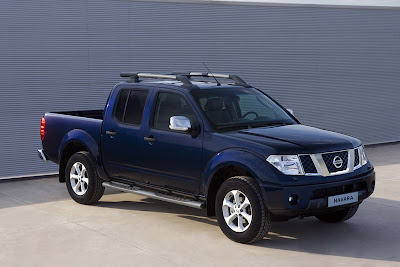Tuesday, August 24, 2010
2011 Nissan Navara : Geneva Motor Show
Europe’s best selling pick-up and its SUV sibling since its launch – the 2010 Nissan Navara have been given a mid-term boost with a number of significant enhancements designed to keep them at the top.
Among the changes are the arrival of a new and technically advanced 3.0-litre V6 diesel engine; important improvements to the popular 2.5-litre dCi diesel; greater levels of passive safety; new equipment including the availability of a state-of-the-art Nissan Connect Premium touch-screen satellite navigation system, a premium Bose sound system and a rear view camera; enhanced interior quality and a number of styling changes to keep Navara and Pathfinder looking sharp.
Launched at the Geneva Motor Show, the improved new-look Nissan Navara models are due on sale across Europe in April 2010. They will be followed two months later by the new 3.0-litre V6 diesel flagship models.
The new direct injection V6 turbodiesel has been developed by the Renault Nissan Alliance to deliver high levels of performance with strong economy, competitive emissions and class-leading refinement.
The key element of the new V6 – with an unusual vee angle of 65 degrees – is the material chosen for the engine block. Alliance development engineers chose Compacted Graphite Iron (CGI), a material that offers all the benefits of cast iron, including high levels of stiffness and noise absorption, without the weight penalty. And while CGI is heavier than a pure alloy block there is no need to add stiffening ribs or extra sound deadening material so the weight gain is comparatively modest.
Using experience gained during the development of the Alliance 2.0-litre dCi engine – and carrying over some technology – accelerated development of the new V6, but number of significant changes have been made to the hardware for the V9X. The combustion chamber design, for example, has been optimised to improve the balance between emission levels and fuel efficiency.
The compression ratio has been lowered to 16:1 to benefit not just economy and emissions but also noise, vibration and harshness (NVH), while internal engine friction is reduced by the use of ultra smooth components such as the micro-finished forged steel used for the crankshaft.
Labels:
Geneva Motor Show,
Nissan
Subscribe to:
Post Comments (Atom)

No comments:
Post a Comment